Review: HTC U11 Life for T-Mobile
Nov 13, 2017, 8:00 AM by Eric M. Zeman
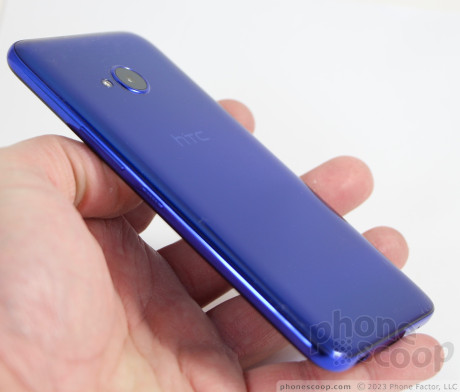

HTC's U11 Life is a mid-range handset disguised as a flagship smartphone. This affordable Android device steals its good looks and many of its features from HTC's more expensive U11. Despite the watered down components, this phone is a compelling option if you're on a budget. Here is Phone Scoop's full review.
Hardware
Is It Your Type?
The U11 Life is an affordable, stylish entry from HTC. The phone shares most of the design characteristics of the U11 flagship, but relies on mid-range specs and materials to reach a much lower price point. If you're looking for an attractive, budget-friendly Android smartphone, the U11 Life is a fine option from T-Mobile.
Body
The U11 Life is what you get when a company takes its best handset and does everything possible to recreate it at half the cost. The U11 Life manages to carry over the more appealing parts of HTC's flagship while keeping the price down.
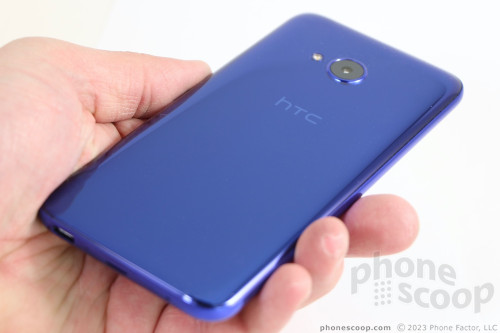
The overall shape of the U11 Life is very close to that of the U Ultra and U11. The Life swaps the U11's sultry glass rear panel for plastic, though you'd hardly know to look at it. The Life has the same mirror-like appearance of the glass-backed U11, but it accomplishes the look with a combination of acrylic and metallic paint instead. The paint is on the inside of the clear acrylic, so while the acrylic might scratch, the paint can't wear away.
The effect is outstanding. Both the rear and front panels are curved along all four edges and corners, providing a smooth, uninterrupted look. These front and rear panels sandwich a thin polycarbonate frame that wraps around the edges. The U11 Life is probably the most attractive plastic handset I've seen.
At 5.87 inches tall and 2.87 inches wide, the U11 Life is close in size to the iPhone 8, Galaxy S8, and Moto X4. This means the U11 will be comfortable to use for most people. The compact footprint is really nice and I appreciate how light the phone is. The smooth shape and profile mean the U11 Life slips into pockets with ease.
The plastic materials feel far better than I expected them to. There's no mistaking that the phone is plastic and not metal/glass, and yet it still pleases. The components are of good quality and fitted together tightly. The rear plastic panel and front glass panel are tucked into the polycarbonate frame snugly all the way around. There's a benefit to the plastic back: the U11 Life isn't nearly as fragile as the all-glass U11.
The U11 Life has a pitch-black front surface. The display, sensors, and home button are indistinguishable from the surrounding bezels, but you can easily spot the small earpiece. Speaking of bezels, HTC still struggles with its forehead and chin. The U11 Life's chin is quite ridiculous. I wish the side bezels were thinner as well. The display practically swims in the framing that surrounds it. The oval home button is capacitive, not physical, and is indented just a bit so you can find it by feel. Next to it are capacitive keys for the back and app-switcher functions. They work well.
I like that the polycarbonate frame doesn't require the antenna lines seen on metal-frame phones. This gives it a seamless, uninterrupted look. The screen lock button and volume toggle are located on the right edge. The screen lock button has distinct ridges to give it some texture. This makes it really easy to find by feel. Travel and feedback are pathetic; total mush. The volume toggle is longer and smoother. The profile is good, though travel and feedback are only slightly better than the lock key. HTC could have done a much better job with these buttons.
The combo SIM / memory card tray is tucked in the top edge of the phone. I had no issues interacting with it. The USB-C port and speaker are on the bottom edge. Rather than use small holes for the speaker, HTC cut a single slit in the frame.
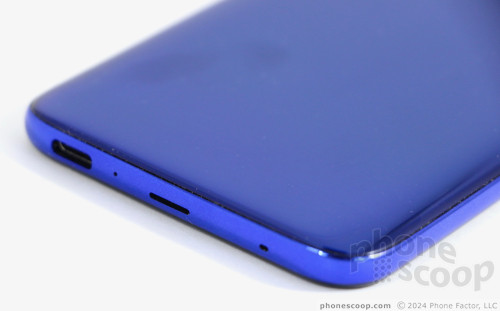
The U11 Life is the first mid-range handset I can think of to ditch the headphone jack. Like the pricier U11, the only way to connect headphones is via the USB-C port. HTC includes its own USB-C headphones in the box, as well as a USB-C-to-3.5mm adapter.
The reflective, mirror-like finish of the rear panel is just awesome. Our blue review unit really stands out from the crowd. It's a shame, however, that the external acrylic is just as apt as glass to collect ugly fingerprints. I found myself polishing the rear constantly to rid it of smudges. The round camera module stands out due to its raised profile.
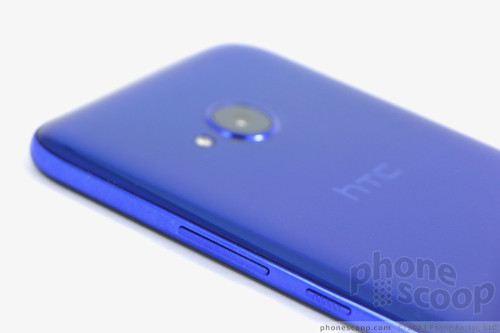
The U11 Life is water resistant, with an IP67 rating. It can handle rain, sprays, and a short immersion into a shallow amount of water. I tested it in my kitchen sink and had no issues.
The U11 is a fine handset you can carry around proudly.
Screen
The 5.2-inch LCD panel has full HD resolution. This size and pixel combo works really well, creating a pixel density of 424ppi. Graphics, images, and text on the screen look sharp and smooth. The display puts out plenty of light, but outdoor viewability was hampered by the high reflectivity of the glass; I had to crank the brightness all the way. You'll find yourself seeking shade when outdoors.
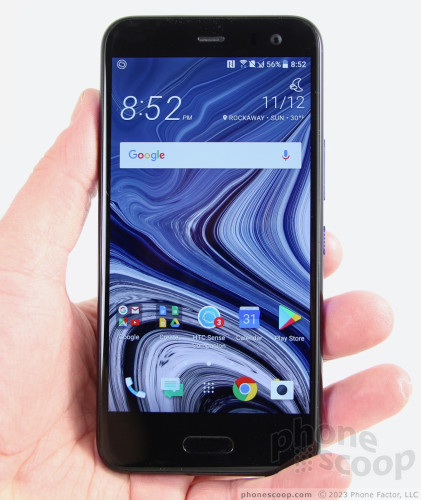
Colors were accurate and viewing angles very good. There's no blue shift nor and brightness drop at all when tilting the phone around, which is impressive for an LCD.
The U11 Life is not ideal for VR apps, but that's expected at this price class.
Signal
The phone includes support for T-Mobile's band 66 LTE but not band 71. The U11 Life did really well on T-Mobile's network in and around New York City. The device had no trouble connecting and stayed on LTE 4G the majority of the time.
The phone patched all calls through on the first dial and didn't drop nor miss any calls. It was able to keep calls connected when traveling in the car at highway speeds. Data performance was quite good. I was pleased with how quickly the device downloaded apps via LTE, and I was easily able to watch video and listen to music over the network without issue.
Sound
The U11 Life produces clean audio through the earpiece that is audible in most places. Clarity is consistent; the earpiece did not produce any distortion when set all the way up. I didn't have any trouble hearing calls walking around Manhattan or my local mall. Those I spoke to through the U11 Life said I sounded great.
The speakerphone is very good. The bottom-mounted speaker delivers clean audio at modest volumes, though it will distort a bit when cranked up for calls. Volume is good enough for the car or other noisy spaces.
Ringers and alerts are quite loud, and the vibrate alert was strong enough to get my attention most of the time.
The U11 Life may not have HTC's iconic BoomSound stereo speakers of old, but the earpiece and speakerphone speaker will work together to produce stereo music. I was pleased with the volume and quality pushed out by the U11 Life. You can surely fill a mid-sized room with tunes.
HTC includes its own USonic headphones with the U11 Life. What makes the USonics unique is that they measure and map your inner ear and then rely on phone-based software to analyze and adjust the sound profile specifically for the shape of your ear canal. What's more, the USonic headphones include active noise cancellation. The headphones and U11 Life work together to listen to the ambient sound and use algorithms to generate the opposite wave length to tamp down the external noise.
It works well. HTC has always prioritized music playback and the combination of ear canal mapping and noise-cancelling headphones gives the U11 Life a major boost. The inclusion of advanced earbuds with a mid-range phone is unusual and welcome, although the lack of of a 3.5mm audio jack makes it somewhat necessary.
Battery
This compact phone has a 2,600 mAh battery tucked into the chassis. It delivers enough juice to get the phone through the end of the day without too much trouble. I was able to push it from breakfast to bedtime consistently day after day, though it often reached the 10-15% mark as I was calling it a day. I think most people will be able to get what they need from the U11 Life's battery, but power users may be looking for a charger by 9pm.
The phone includes HTC's Power Saver mode, which conserves CPU cycles, limits location services, reduces screen brightness, and turns off vibration. The Ultra Power Saver mode is more dramatic; it basically turns the U11 Life into a feature phone, which means the phone, messaging, and email apps run, but nothing else. This can add up to a day and a half of life to a nearly depleted battery.
The U11 Life cannot charge wirelessly, but the phone does supports rapid charging (5V, 2A). A high-speed charger is included with the phone.
Bluetooth, GPS, NFC, WiFi
The phone's secondary radios do their job. I didn't run into any problems pairing and connecting the U11 Life to other Bluetooth devices, such as headsets, speakers, and wearables. Voice calls sounded good via dedicated mono headsets, and fairly good through my car's hands-free system. Music streamed to a speaker sounded decent.
NFC is on board and works with Android Pay if you want to make mobile payments. I also found the NFC radio to be helpful when pairing some Bluetooth accessories.
The Life's GPS radio worked well enough. Location accuracy was often as good as 20 feet, but averaged closer to 30. The phone pinpointed me in just a few seconds and kept up during real-time navigation.
The WiFi radio did a great job.
Software
Lock Screen
The U11 Life runs Android 7.1 Nougat with HTC's Sense user interface on top.
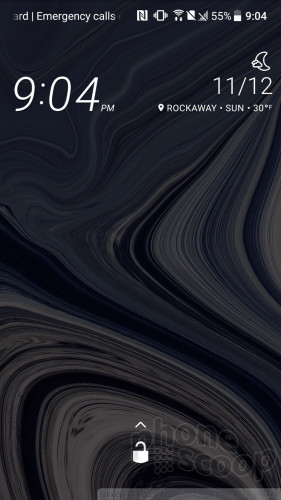
The lock screen shows the clock, notifications, and shortcuts whenever the lock or home buttons are pressed, the screen is tapped, or the sides are squeezed. I like that the clock includes the weather details for your current location.
The Quick Settings panel is accessible from the lock screen, as is the full notification shade where you can respond to notifications and more. The lock screen shortcuts, of which there are five, mirror whatever apps you've set in the home screen dock.
The U11 Life's front-mounted fingerprint sensor is easy to train and easy to use. The U11 Life's sensor is on par with the fingerprint readers on other mid-range phones, such as Motorola's X4. It's reliable and quick, but I've seen quicker.
Home Screens
Blinkfeed, HTC's social newsreader, is active as the left-most home screen panel of the U11 Life. You can use it to generate a feed from Twitter, Facebook, and a handful of third-party news sources. I wish it didn't include ads. You can disable Blinkfeed completely if you wish.
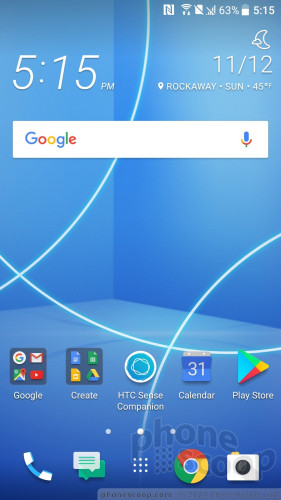
HTC left the Quick Settings panel alone, meaning it looks and acts like stock Android, but the company gave the settings menu its own fonts and colors. These core tools are easy to access and use.
HTC added a lot of flexibility to the app drawer, as it allows users to arrange apps alphabetically, in custom order, or via most-recently-used. It also lets people change the size of the grid. The app drawer includes a search tool and supports folders.
The U11 Life offers a handful of pre-installed themes. The themes can be tweaked with various accent colors, wallpapers, keyboards, icons, fonts/sizes, and on and on. HTC's fully-customizable Freestyle themes are available, though you have to create an HTC account to download the coolest stuff.
The U11 Life is powered by the Qualcomm Snapdragon 630 with 3 GB of RAM. The phone ran smoothly with no issues whatsoever. All of the apps opened swiftly and screen transitions were quick. The Snapdragon 630 gives the U11 Life all the power it needs.
Camera
The camera can be opened via Edge Sense (squeezing the phone), a double press of the screen lock button, the lock screen shortcut, and the home screen icon. The camera opens quickly. By default it opens in whatever shooting mode you used most recently, whether that's the selfie camera, video camera, etc.
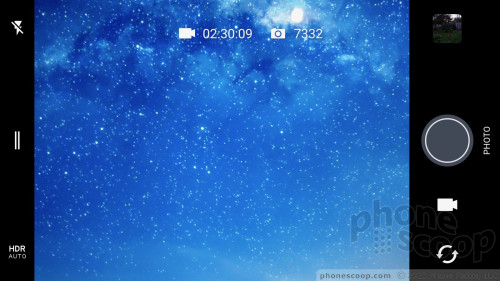
A few settings are available along the left edge of the camera app, including the flash and HDR. Both of these can be set to on, off, or auto. The U11 Life has separate buttons for snapping pictures and capturing video.
Swipe open the little drawer on the left side of the screen to access the modes, which include photo, panorama, pro, time lapse, slow-motion, and several dedicated selfie tools.
The Photo shooting mode lets you control the flash and HDR and that's about it. This is your basic point-and-shoot camera.
The Pro mode is a manual mode that gives you control over white balance, exposure, ISO, shutter speed (up to 2 seconds), and focal points. The sliding tools for adjusting these are straightforward. You can save three custom Pro shooting modes as presets if you wish. Pro mode also allows you to capture RAW images, which offer more potential for fixing exposure and white balance after the fact.
The other shooting modes behave more or less how you expect them to. The dedicated selfie mode includes a screen-based flash, but doesn't include features like beautification filters.
One notable absence: HTC's Zoe shooting mode is nowhere to be found.
Once you learn to navigate the app, the camera is quick.
Photos/Video
The HTC U11 Life has a 16-megapixel sensor with PDAF (phase-detection autofocus), and an aperture of f/2.0. Those are good specs for the price point.
The Life delivered sharp, bright images. Focus was spot on, and the phone captured accurate colors. Exposure is handled well when shooting in normal mode, as well as with HDR set to auto. I was pleased with the majority of shots I took with the phone. The only negative I saw was a bit of grain in low-light shots. The U11 Life takes very good photos, particularly for the price point.
The selfie camera is fine. It has a 16-megapixel sensor, screen-based flash, and an f/2.0 aperture. Exposure is good, as is color accuracy. Focus tended to be a little soft. I appreciate the panorama selfie mode, which lets you take super wide selfies.
The video camera delivers excellent video. It's able to capture 4K video. The video I shot was sharp, colorful, and just about perfectly exposed. The phone has multiple microphones for capturing high-quality audio.
Most people should be able to rely on the HTC U11 as your main picture and video device.
Edge Sense
The U11 Life carries over one of the U11's coolest features: Edge Sense.
The phone has pressure sensors buried in sides of the phone. In order to use Edge Sense you'll need to learn how to properly squeeze the phone and pick what you want to happen when you squeeze.
The default action is to launch the camera. Since a double-press of the screen lock button also launches the camera, you might want to set Edge Sense to do something else, such as launch Google Assistant or Alexa, etc.
You can turn on and define advanced squeezing actions, if you wish, such as short squeezes and squeeze-and-hold gestures. These allow you to create a total of three possible actions when squeezing the phone.
Edge Sense works through cases and gloves, which is a nice bonus.
Sense Companion
Sense Companion is HTC's spin on the device-side assistant. You'll need to activate the service, walk through some basic settings, and give it permission to offer suggestions. Over time, Sense Companion will tell you when there's traffic, warn you about upcoming calendar events, record and display your fitness data and such. It's not voice activated like Google Assistant or Amazon Alexa, so you have to interact with it more directly.
To be honest, it doesn't so anything that Google Assistant and Alexa don't already do, and the latter do it all a lot better.
Wrap-Up
The HTC U11 Life looks and mostly performs like a flagship smartphone, at half the cost. HTC did a great job designing an attractive, affordable handset that comes across as a high-end piece of hardware.
Beyond its stunning looks, the U11 Life is comfortable to use, has a decent screen, delivers fine wireless performance, and sounds great when it comes to calls and music. I wish battery life were a bit better. It's a bummer that the phone doesn't have a headphone jack, but the included earbuds are actually very good. The waterproofing is an added bonus.
HTC's user interface works well, even if it takes some tweaking to fine-tune. I like how quickly the camera app performs, and it delivers the goods when it comes to taking photos and videos. The Edge Sense tool can be useful. I like that HTC includes Alexa on its devices for those who prefer Amazon's assistant over Google's.
For $300, this phone is a steal. Monthly payments with T-Mobile are an easy $12. This is an excellent handset for the money. It competes well with other mid-range devices, such as the Moto X4 and should be a winner for HTC. If you need an inexpensive device that hits way above its weight class, the U11 Life is a lively option.
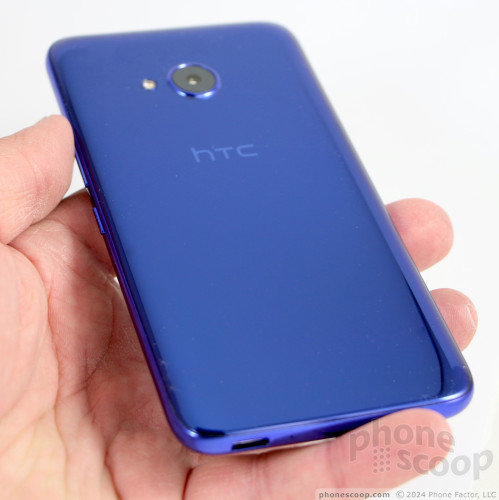
Comments
No messages




























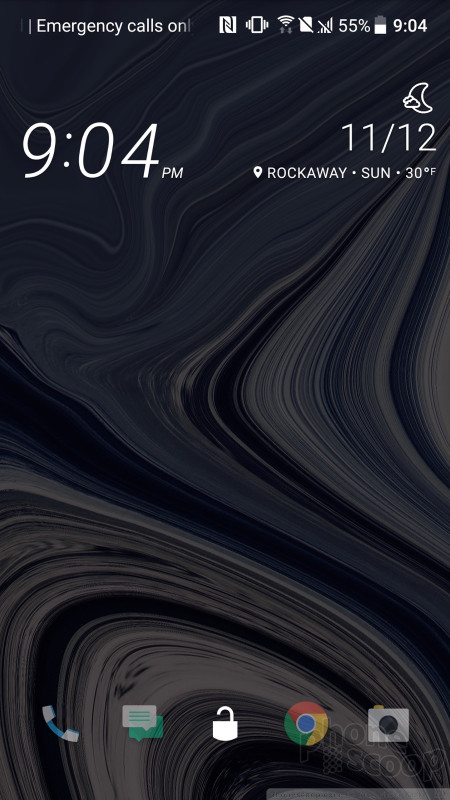





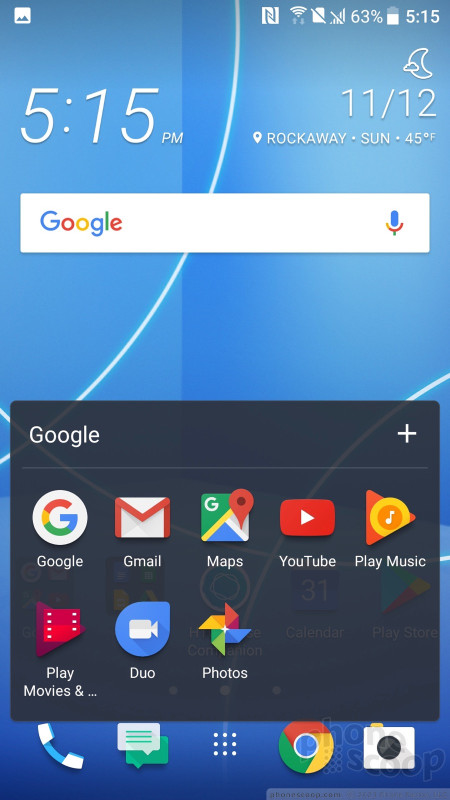







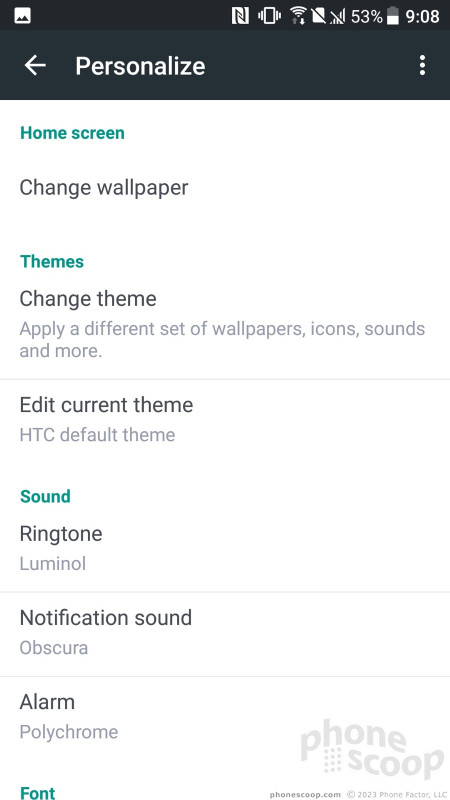








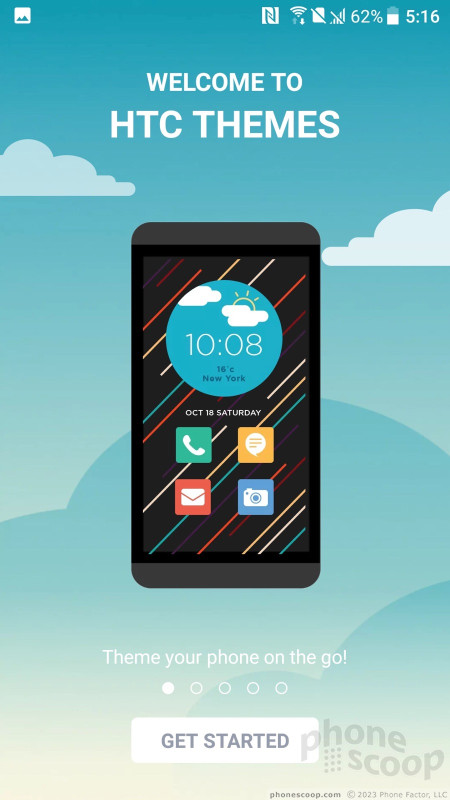





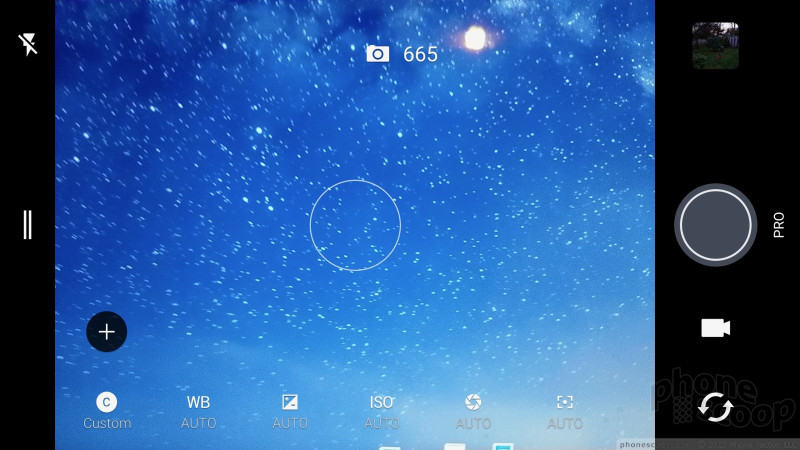























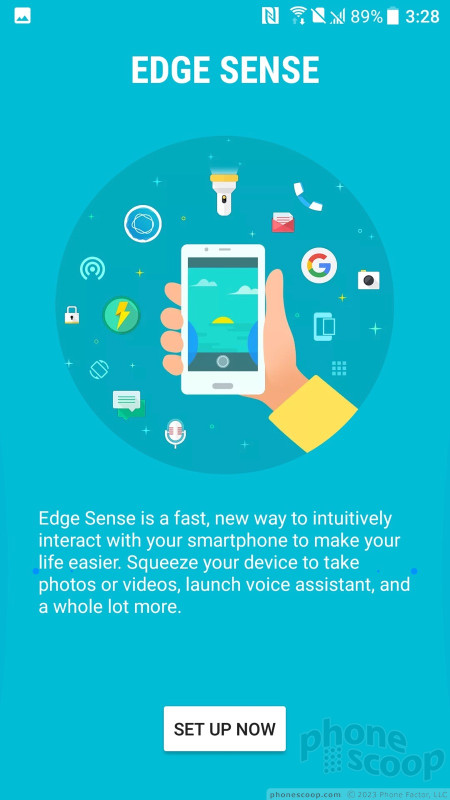





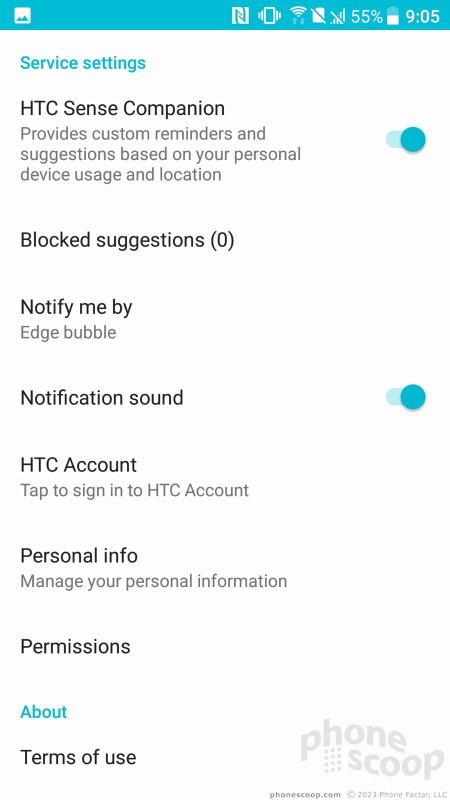








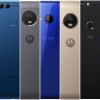 Top Five Budget Handsets of 2017
Top Five Budget Handsets of 2017
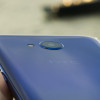 Hands On with the HTC U11 Life
Hands On with the HTC U11 Life
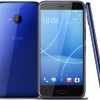 T-Mobile to Sell HTC U11 Life Mid-Ranger for $349
T-Mobile to Sell HTC U11 Life Mid-Ranger for $349
 HTC U11 life
HTC U11 life










